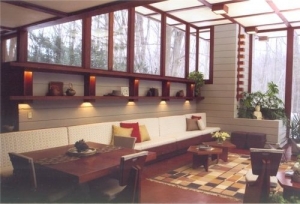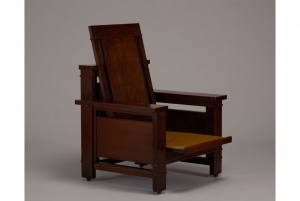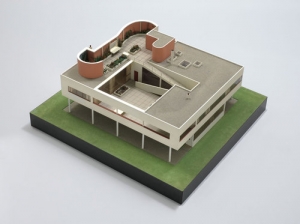|
Displaying items by tag: modern architecture
The Museum of Modern Art (MoMA) in New York has named Martino Stierli its new Philip Johnson Chief Curator of Architecture and Design. Stierli, who currently teaches the history of modern architecture at the University of Zurich, will begin at MoMA in March 2015. His duties will include overseeing the Department of Architecture and Design’s special exhibitions, installations from the collection, and acquisitions. Stierli succeeds Barry Bergdoll, who stepped down in 2013. Now a professor of art history and archaeology at Columbia University, Bergdoll continues to be a part-time curator at MoMA.
Stierli’s scholarly research has focused on a range of topics, including architecture and media, the photographic and cinematic portrayal of architecture, the intersection of art and architecture, the transatlantic exchange in postwar and postmodern architecture, and the role of travel in architectural education.
A visionary architect, Louis Kahn (1901-1974) designed dramatic buildings that drew inspiration from historical references and Ancient ruins as well as more modern forms. “Louis Kahn: The Power of Architecture,” which is currently on view at the Design Museum in London, explores Kahn’s influential work and legacy through architectural models, original drawings, travel sketches, photographs, and films.
Based in Philadelphia, Kahn is responsible for designing some of the world's most profound pieces of modern architecture, including the Salk Institute in La Jolla, California, the Kimbell Art Museum in Fort Worth, Texas, and the National Assembly Building in Dhaka, Bangladesh. His style was monolithic and his buildings, which often play with light and shadow, show off their weight, materials, and the way they were assembled.
As an architect, Gene Kaufman doesn’t typically save buildings; he designs them.
But when he heard of plans to change Paul Rudolph’s celebrated but shuttered government building in Goshen, N.Y., as part of a renovation plan, he decided to step in.
“To lose a building like this would be a tragedy,” said Mr. Kaufman, a partner at Gwathmey Siegel Kaufman Architects in New York City.
He has offered to buy and restore the 1967 building, which architecture experts hail as a prime example of raw Brutalist style and others consider an eyesore in a town known for its historic harness-racing track and Greek Revival, Federal and Victorian houses.

One of the nine Usonian homes built in Ohio by the celebrated American architect Frank Lloyd Wright has just been put on the market. Located in Willoughby Hills, the 1,800-square-foot Louis Penfield House comes with two cottages on nearly 19 acres of land and carries a price tag of $1.7 million. Completed in 1955, the house was commissioned by Louis Penfield, a high school art teacher.
Wright began designing his Usonian homes in 1936. The houses, which erred on the smaller side, were made with middle-income families in mind. The homes were typically one story, flat-roofed dwellings without a garage and little storage space. The abodes usually featured overhangs or carports (a term coined by Wright) to protect parked vehicles. Wright’s Usonian houses were constructed using native materials and featured a strong visual connection between exterior and interior spaces. In total, Wright created around sixty Usonian homes, which served as the predecessor for the ranch-style houses that dominated residential architecture during the 1950s.

A rare and early reclining armchair designed by American architect Frank Lloyd Wright (1867-1959) is currently on view at the Currier Museum in Manchester, NH. A pioneer of modern architecture, Wright designed the chair between 1902 and 1903 and it features the minimal aesthetic and linear design that he is best known for. The chair was originally designed for his prairie style Francis W. Little House in Peoria, IL but he used different variations of the chair over the course of the next decade, including in his own studio in Chicago’s Oak Park.
The presentation of the chair coincides with the reopening of the Currier’s Isadore J. and Lucille Zimmerman House (1950), which Wright designed. Along with the exterior, Wright devised the House’s interiors, furniture, gardens, and even its mailbox. The Zimmermans left the house to the Currier in 1988 and it opened for public tours in 1990. Besides being able to view a Wright masterpiece, visitors are offered a glimpse of the Zimmermans’ personal collection of modern art, pottery, and sculpture. The Zimmerman House is the only Wright home open to the public in New England. It was listed in the National Register of Historic Places in 1979.
Tours of the Zimmerman House are offered ten times a week and require a reservation.

The Museum of Modern Art is busy organizing the largest exhibition on the groundbreaking architect Le Corbusier ever to be held in New York. Le Corbusier: An Atlas of Modern Landscapes is set to open on June 9 and run through September 23, 2013.
Born Charles-Édouard Jeanneret, Le Corbusier defined modern architecture during his career, which spanned five decades. Le Corbusier was not just an architect, but also an urban planner, a painter, a writer, a designer, and a theorist. Le Corbusier’s best-known buildings include the Palace for the League of Nations in Geneva, Villa Savoye in Poissy, France, the Swiss Building in Paris, and the Secretariat at the United Nations Headquarters in New York.
An Atlas of Modern Landscapes will be curated by the modern architecture scholar, Jean-Louis Cohen, and will cover Le Corbusier’s long and varied career. The exhibition will explore Le Corbusier’s contributions to architecture, interior design, and city planning. Works on view will include writings, photographs, sketches, watercolors, and models of some of Le Corbusier’s most renowned works.
|
|
|
|
|